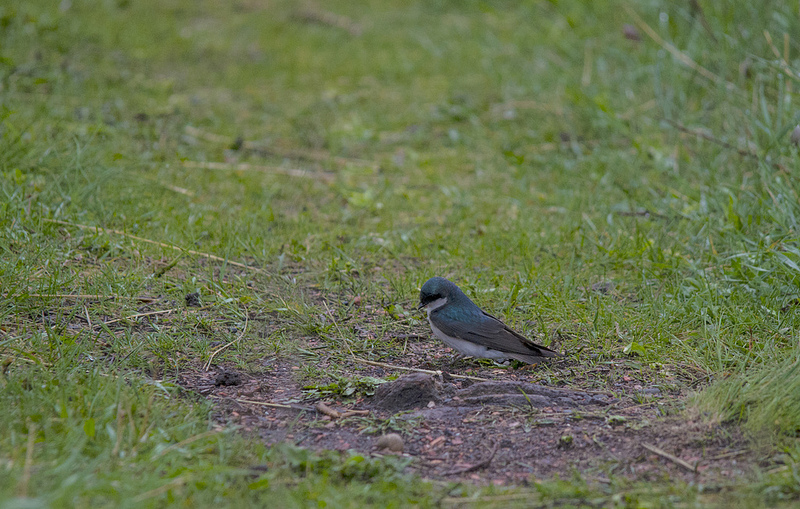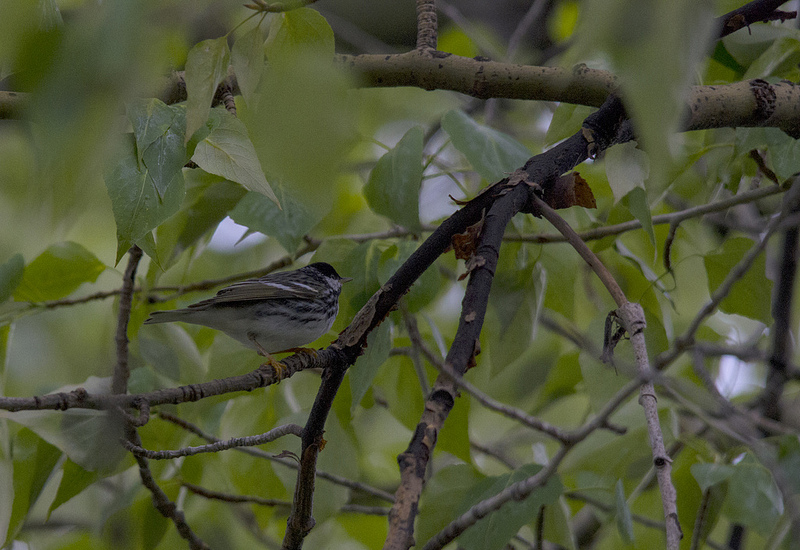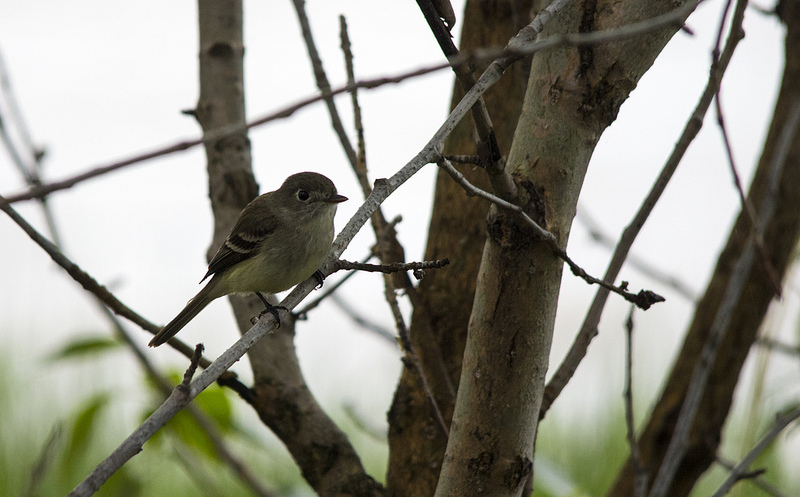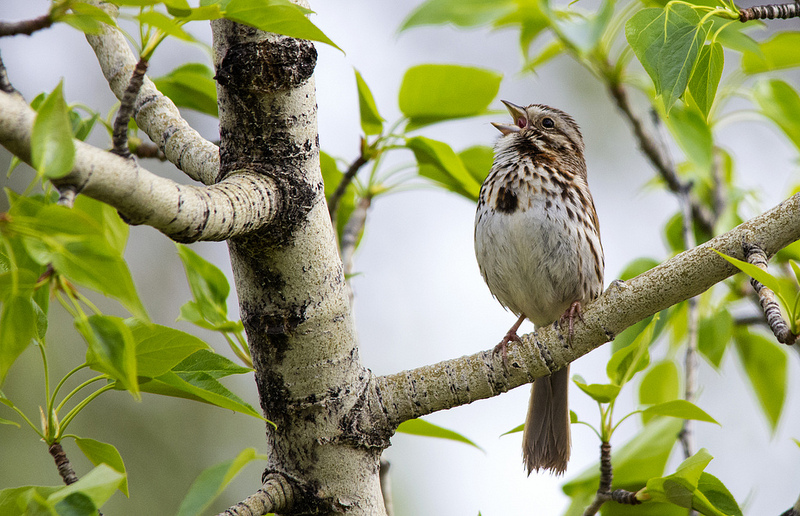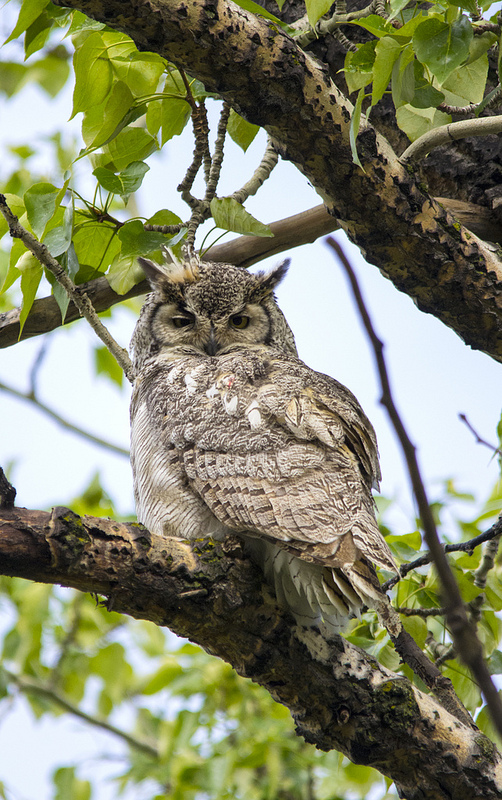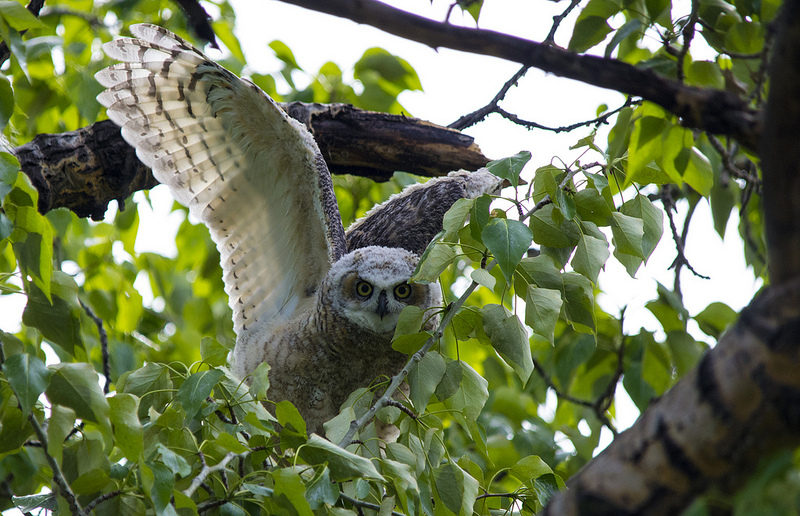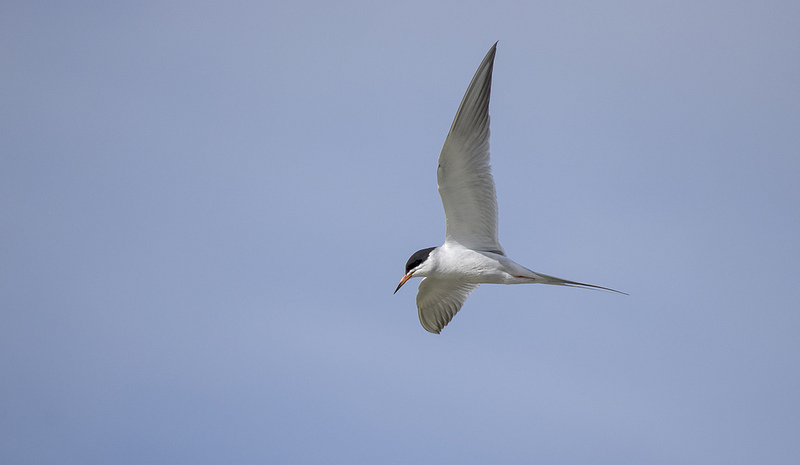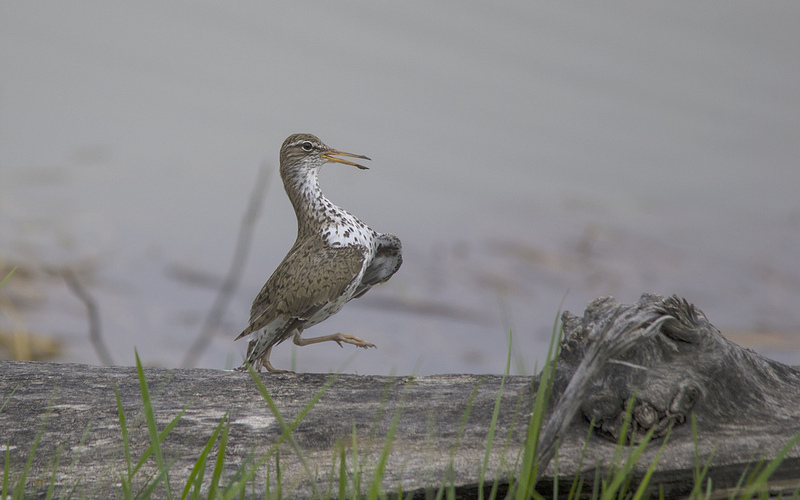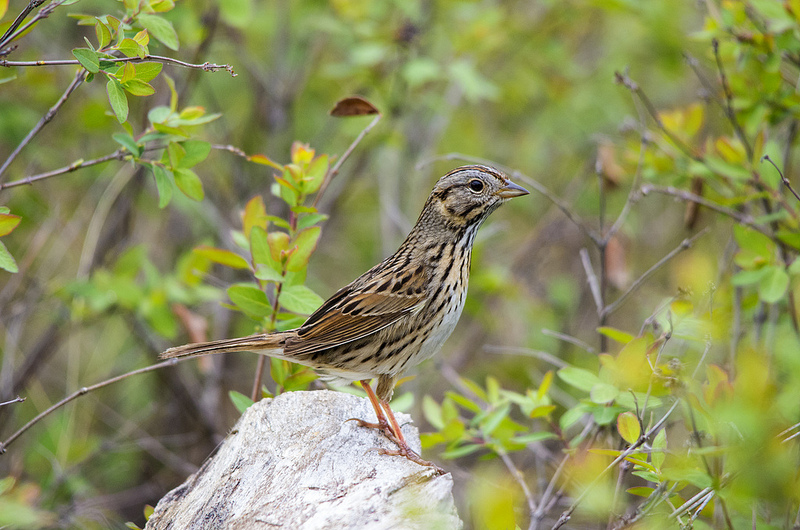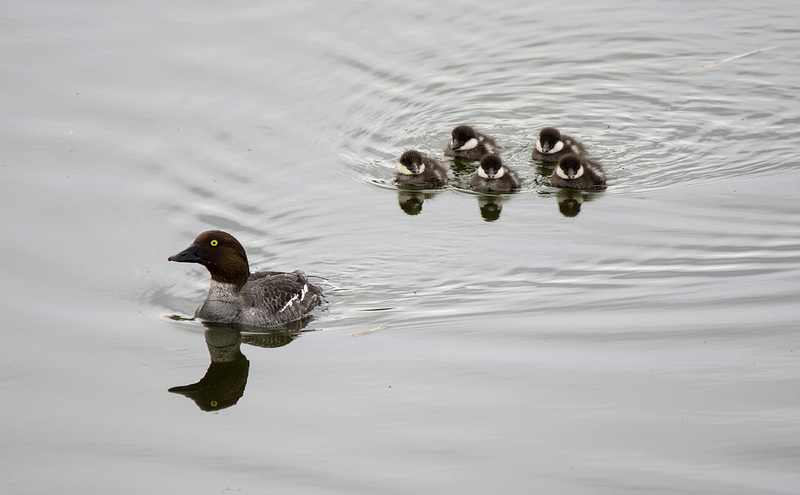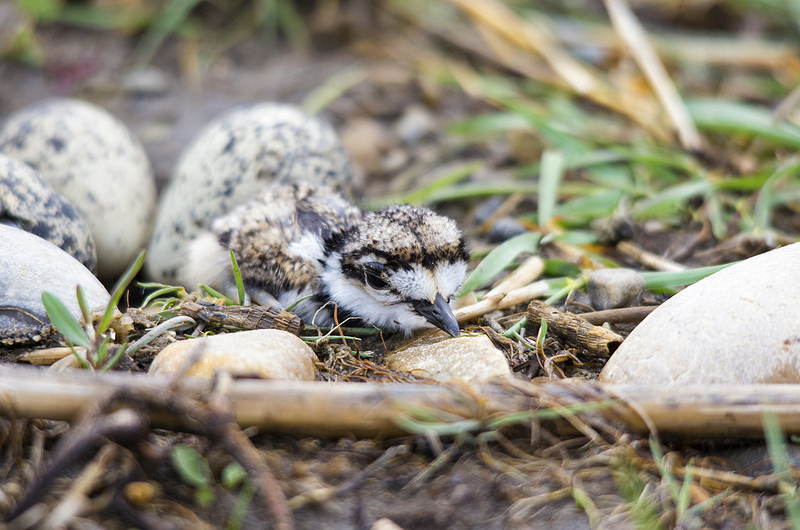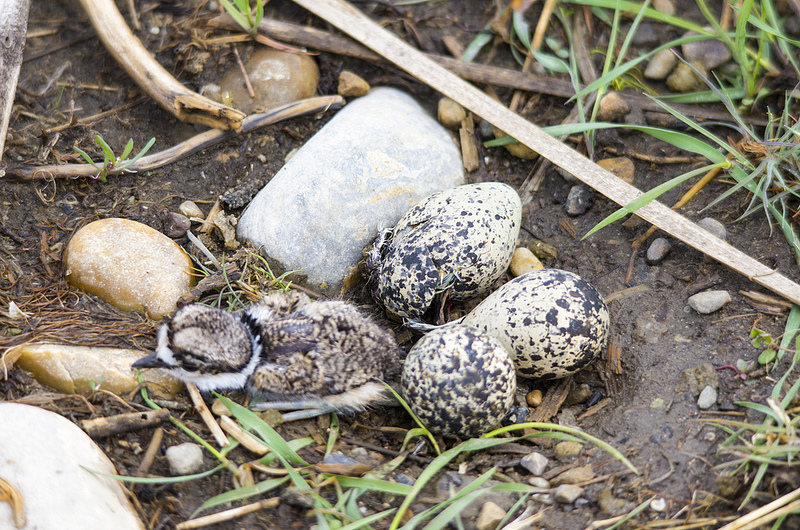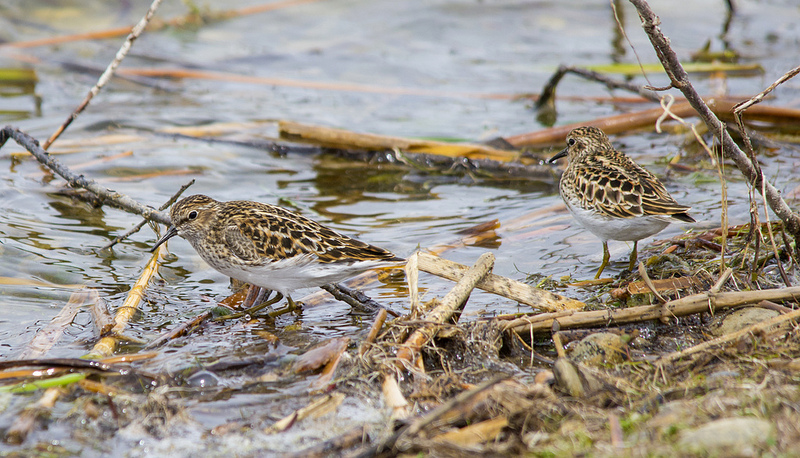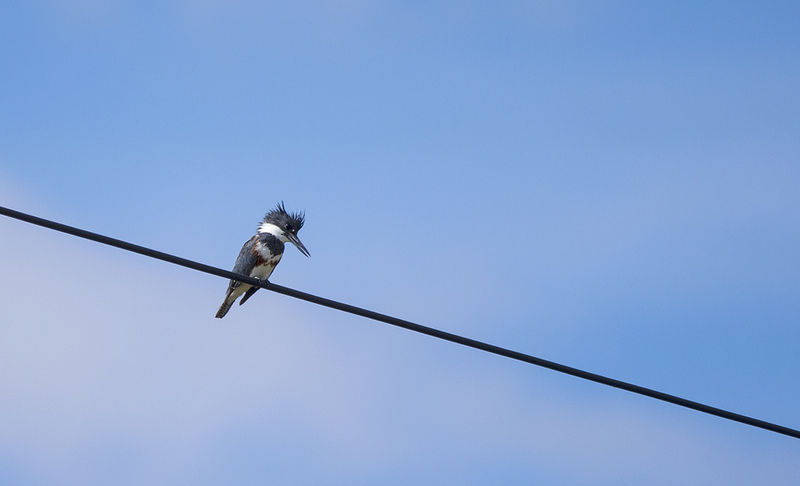The May Species Count weekend is always both exciting and exhausting. Early morning wake ups, lots of ground to cover, and lots of birds to find mean there’s little time for anything else. While most participants in Calgary only have one or two areas to cover, between Bob Lefebvre and I, we cover four areas over two days, including the Weaselhead and North Glenmore Park on Sunday morning with the Friends of Fish Creek group, and the last two years we’ve gone on to cover Inglewood Bird Sanctuary and Pearce Estate Park in the afternoon. That wouldn’t be too bad, but the area I cover on Saturday is all walking, and includes the north end of Hull’s Wood all the way south to the south end of Lafarge Meadows. To give you an idea, I covered 18.2 km in 9 hours of walking, and netted 68 species of birds, down a few species from last year, but a few surprises (and even a new life-bird) more than made up for it.
One thing you get to see when you’re out at first light is behaviour that you rarely ever see. For instance, Tree Swallows do forage on the ground as well!
Shortly after this sighting was my lifer for the weekend, this Blackpoll Warbler was one of a flock of four birds foraging near the riverbank. Given that the water level had risen quite a bit in the past few days, I suspect there were a lot of insects climbing the trees to get up above the water level.
For the second year in a row, I’ve come across a fairly uncommon bird within the city limits, and while I only heard it last year, this year I was actually able to observe this Willow Flycatcher building a nest in the same grove I heard it last year. It was nice to get clear looks at it this time around!
Of course the Song Sparrows were plentiful, and apparently fearless in their search for a mate and announcing their territory. I walked within three feet of this little singer as I left the path near his perch.
No trip to the Sikome Lake area would be complete without a visit to the resident Great Horned Owls…
Forster’s Terns were a regular sight over the ponds near Highway 22X this year, while last year they were nowhere to be found.
This Spotted Sandpiper took exception to another male sitting on his log, and charged him in their traditional territorial display.
When you’re out on a long walk like this, eventually you take some of the side trails and start pishing. This Lincoln’s Sparrow reacted quite strongly to my intrusion, and shooed me off.
A couple of the most touching sightings though were the babies. This female Common Goldeneye with her five young in tow was the first group of young that I’d seen in the park this year.
But the most powerful experience I’ve had so far this year was nearly stumbling over this Killdeer nest, with one baby already hatched…
… and another hatching while I stood there in awe.
The last new bird I was able to add to my list for the day was pair of Least Sandpipers, which are fairly uncommon at this pond at the south end of Lafarge Meadows, but with a lack of mudflats outside the city, they were likely just passing through on their way to better feeding grounds further north.
As the day wore on and the morning turned to afternoon, my feet grew tired and I was about ready to pack it in, but not before finding this female Belted Kingfisher hunting over one of the backwater creeks on the west end of Hull’s Wood. It was a great end to a great day!
